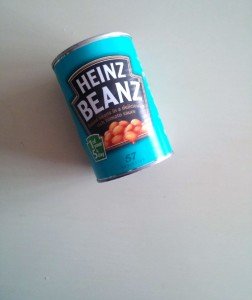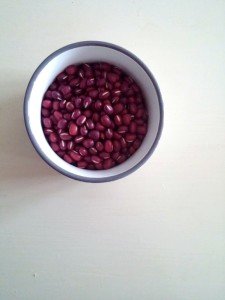photo credit Carmela Kia Giambrone
This post comes from the need to dispel the myth that to have something ready to the need must necessarily resort to the ready-in-box that generally in addition to being in tin cans for months or even years, contain large amounts of salt contains even sulfites or other crap or even, if it is found in glass jars, the exaggerated cost does not justify the purchase in any way.
Applying this method a couple of times a month we can ensure legumes always ready and no need to buy tins ... imagine how nice to come home after work and hungry to prepare a soup of lentils, a chickpea hummus or a bean salad in less than 5 minutes!
In order to have ready, good quality, #healthy and good #vegetables (and at a very low cost!), All you need to do is #organize: just a couple of hours are enough to prepare at #home the quantity of ready legumes we can have need for months and months in fact the method of conservation that we will use will allow us to keep them even for a whole year.
photo credit Carmela Kia Giambrone
What we will need will be what we all have at home or that with little expense we can recover:
- dried vegetables of good quality
- water
- a pressure cooker
- whole sea salt
- piece of kombu seaweed
- glass jars for preserving
(and to your taste aromatic #herbs such as laurel, thyme or rosemary)
Let's start from the beginning: the first step is to choose the vegetables and soak them the night before in plenty of #water.
So in the morning just drain, rinse and put them in pressure cooker by cooking them immersion, ie without using the basket but directly in water (which must buy them for good).
Just add a piece of kombu seaweed that will facilitate digestion and based on personal tastes, laurel, rosemary, thyme, in short, what you like best.
The salt instead we will add it only at the end, after cooking.
•Cooking times•
The cooking of the legumes varies according to the quality and the legume chosen but also to the time of soaking (which must never be less than 6-8 hours) and for a question of health (the legumes contain saponins and phytates and thanks to cooking and to soak are eliminated) that for a question of ease of #cooking.
In general, for smaller ones such as giant lentils, red or mignon or whole or split peas, it takes 20 minutes for those that are a little larger, such as black beans, red beans, borlotti beans, cannellini beans, chickpeas or broad beans about twice.
Remember to leave them a little 'back with the cooking so that they do not reduce to pulp and especially so that once you decide to use them you can cook for at least 5 minutes without risking that they turn into instant cream.
Now while the legumes are cooking you have to put to sterilize the jars just like you do to prepare a jam or a common preserve: boil for 20 minutes in a beautiful pot full of water the empty jars then remove them and put inside them cooked vegetables drained (putting aside the cooking water but without throwing it!) At the end, just pour the cooking liquid to cover and cap the jars well.
We will then put the closed and warm jars in a pot that we will cover with cold water, we will place it on the fire and once it reaches a boil, lower the heat and boil for 20 minutes.
This is the classic method of conservation, that of our grandmothers, easy and safe: the vacuum that is formed inside the jars allows you to store for months and months many foods without risk to #health.
Of course when we consume them we will have to hear the "clack" that indicates that this effect of vacuum was there, worth... give up eating its contents!
Then we will extinguish the fire and let it cool down without removing the #jars from the water.
Now you just have to make room in the #pantry and ... enjoy your meal!
• Read my Wordpress blog https://www.equoecoevegan.it and follow my Instagram Profile https://www.instagram.com/kia_eeev/ •
Bello! Non ne avevo idea!